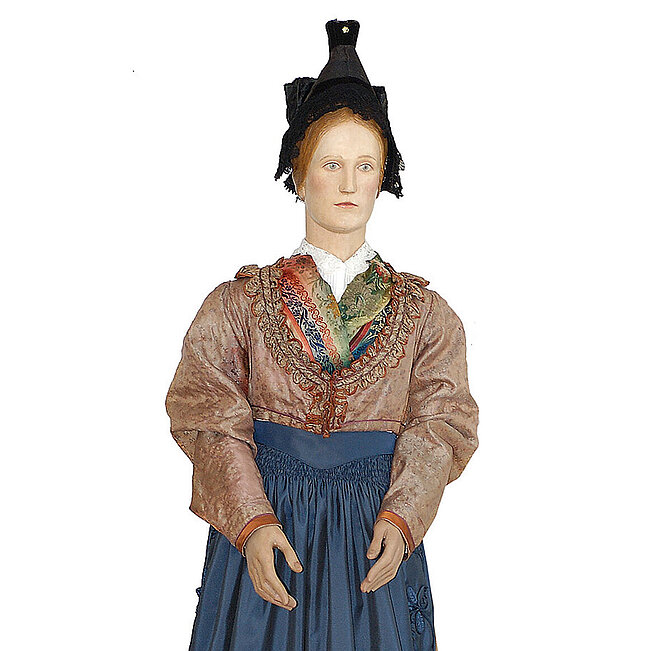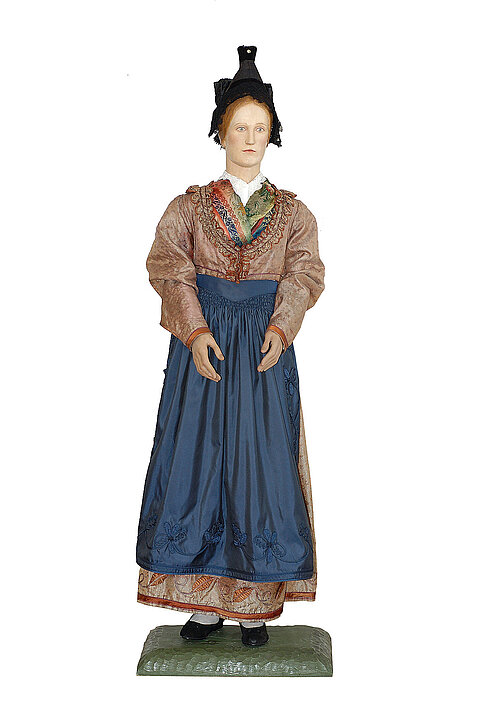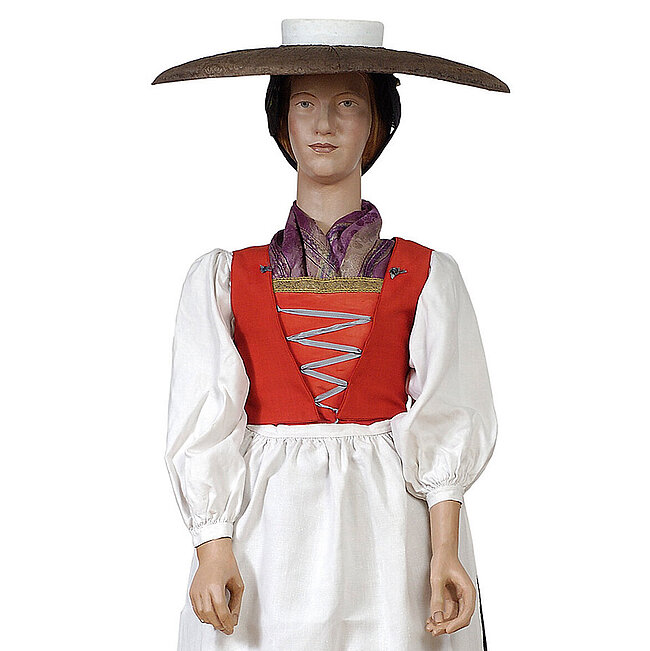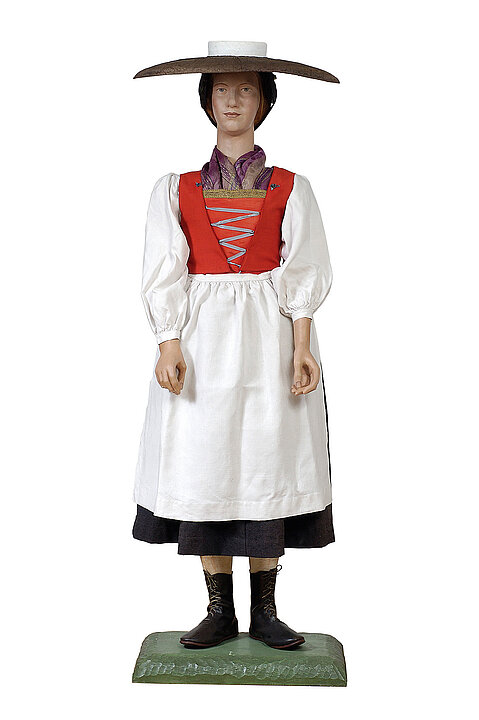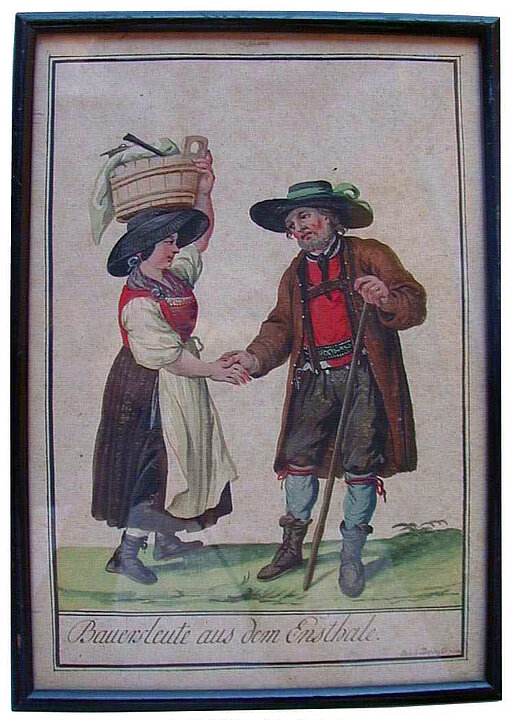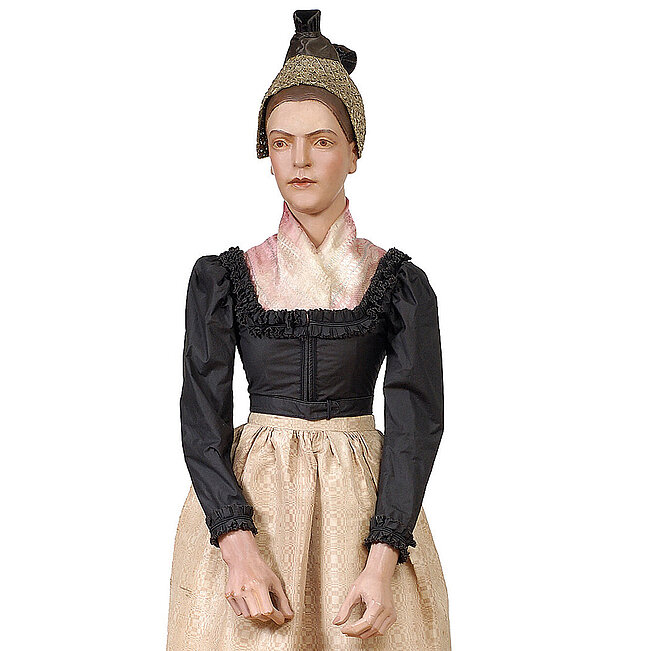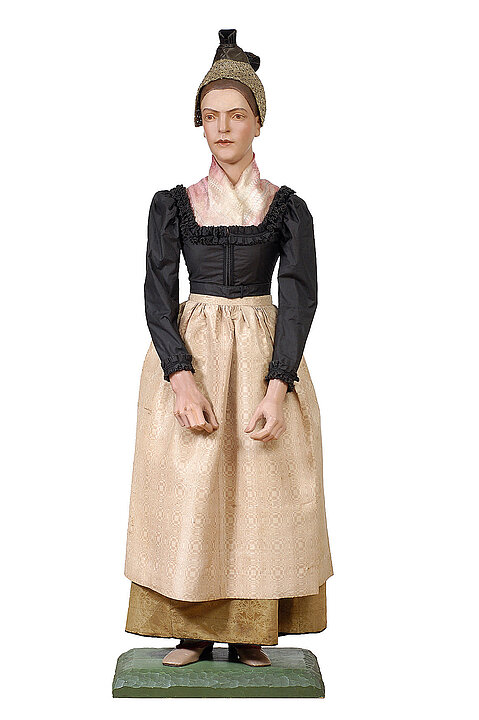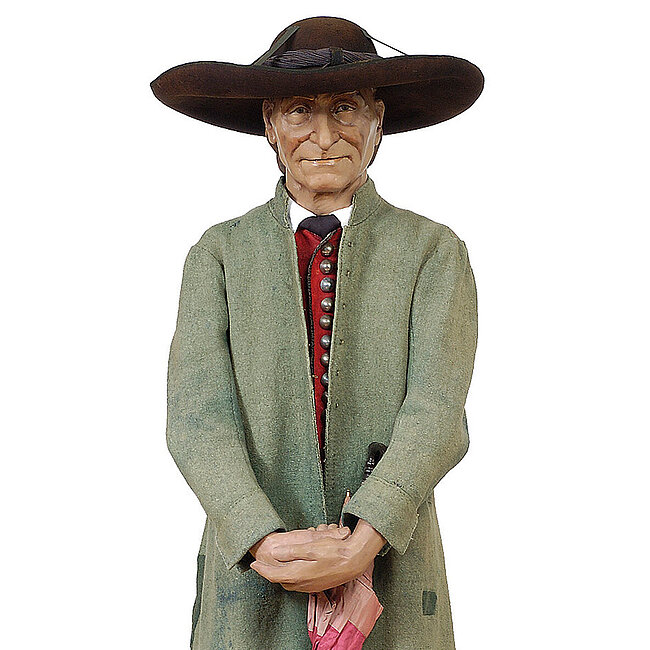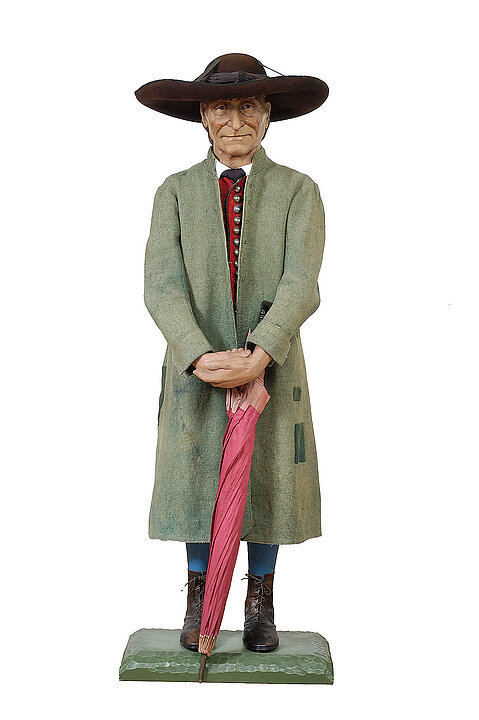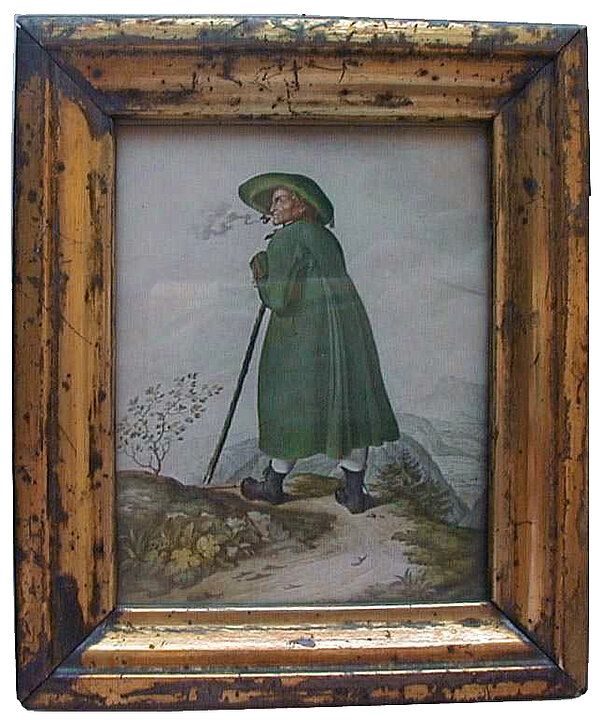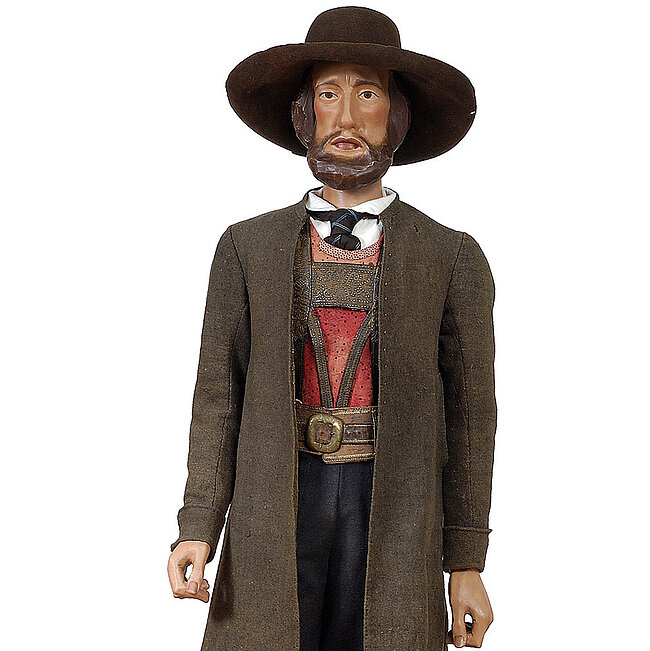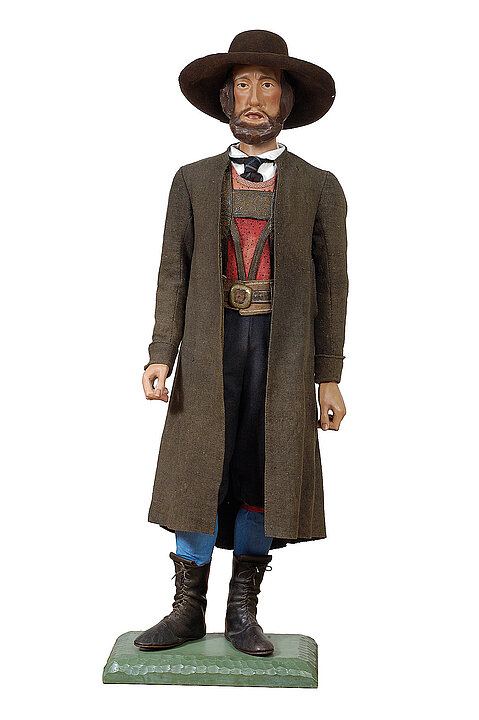The clothing for this figure was based on a watercolour by Johann Lederwasch and underwent only minimal changes over time. The ‘disc hat’ is conspicuous; because of its size, it was rarely practical at work and was therefore taken off. Under the disc hat sits a Kärntner (or Karner, meaning Carinthian) Bodenhäuberl, a type of bonnet whose band encloses the topknot. These usually ornate traditional bonnets are reminiscent of 18th- century middle-class fashions originating in England. According to Geramb, they were replaced by black silk headscarves from around the mid-19th century.
Colourful mixture
The individual items of clothing were collected at different times and from different sources: the spencer was purchased in 1885 for 2 gulden, the fichu from the Passail region was acquired 50 years later for 5 shillings from Kapfer, a second-hand dealer in Eggenberg. The stockings come from a farmhouse in the Obdach region and were also purchased by the museum in 1935 via A. Thalhammer from Obdach (Murau district). The original disc hat—a gift—was exchanged in the 1980s for a better preserved piece from the collection of the Folk Life Museum.























